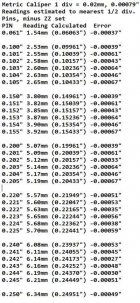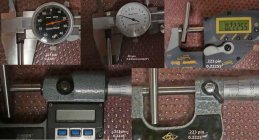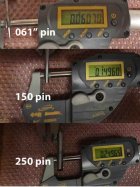jds holler
Gold $$ Contributor
I am a very youthful "old bastard", who in the last year or so finally went to digital vs mechanical dial technology for my 6" caliper. Soooo, I picked up the highest priced one at Harbor Freight, and am pretty impressed with it. It's called QUINN Absolute. Fit and finish is great, away better than cheaper versions I've seen, and it came in shy of 5o bucks. My other measuring tools are older Mitutoyo and Starrett tools, so I feel fit to judge.
Now this new one seems very accurate and always returns to zero. I can turn it on from any position, and it is always oriented in relation to zero. I can zero it in any position, and it reliably remembers where that zero is. -- my question is HOW?? There is no gear rack to drive a locator wheel or anything that visibly preforms the task. What kind of magic does this thing use?
Now it's someone's turn to chime in and make me feel stupid. jd
Now this new one seems very accurate and always returns to zero. I can turn it on from any position, and it is always oriented in relation to zero. I can zero it in any position, and it reliably remembers where that zero is. -- my question is HOW?? There is no gear rack to drive a locator wheel or anything that visibly preforms the task. What kind of magic does this thing use?
Now it's someone's turn to chime in and make me feel stupid. jd














